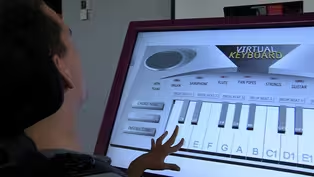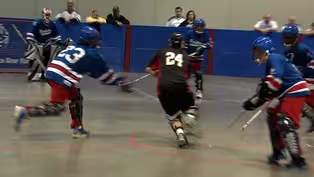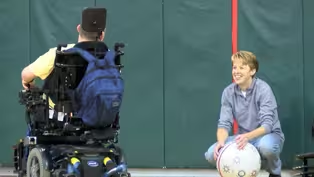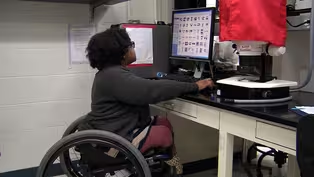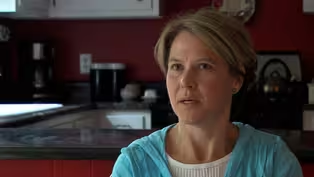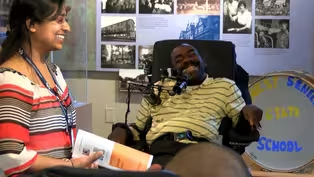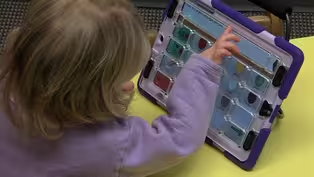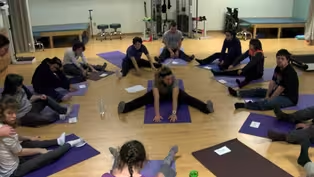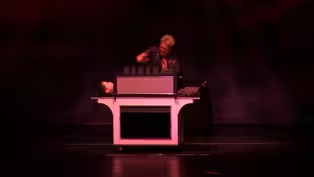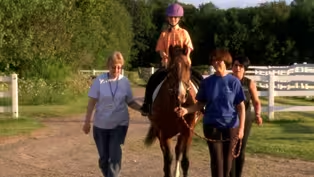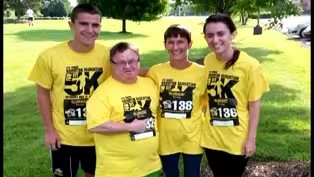Move To Include
Traumatic Brain Injury
Special | 4m 6sVideo has Closed Captions
A program that specializes in working with individuals suffering from traumatic brain injury.
We visit the agency, Bridges for Brain Injury. We will meet Lance Holm, a wildlife education specialist who suffers from traumatic brain injury and John Truini, the founder of Wildlife Defenders, a program that specializes in working with individuals suffering from traumatic brain injury.
Problems playing video? | Closed Captioning Feedback
Problems playing video? | Closed Captioning Feedback
Move To Include is a local public television program presented by WXXI
Move To Include
Traumatic Brain Injury
Special | 4m 6sVideo has Closed Captions
We visit the agency, Bridges for Brain Injury. We will meet Lance Holm, a wildlife education specialist who suffers from traumatic brain injury and John Truini, the founder of Wildlife Defenders, a program that specializes in working with individuals suffering from traumatic brain injury.
Problems playing video? | Closed Captioning Feedback
How to Watch Move To Include
Move To Include is available to stream on pbs.org and the free PBS App, available on iPhone, Apple TV, Android TV, Android smartphones, Amazon Fire TV, Amazon Fire Tablet, Roku, Samsung Smart TV, and Vizio.
More from This Collection
Homework Hotline, designed for grades 4 through 12, provides the tools students need to succeed both in and out of the classroom, & supports academic achievement across a variety of learning standards. This collection is specifically curated by Move to Include & presents in-depth stories & profiles of individuals & organizations who are working to make our community inclusive & accessible for all.
Video has Closed Captions
How touch screen technology is making learning more accessible for all students. (2m 58s)
Video has Closed Captions
See how floor hockey is helping these players both in and out of the rink. (2m 16s)
Video has Closed Captions
Recreational activities through adaptive sports and inclusive recreation. (5m 27s)
Video has Closed Captions
Genomics and how scientists use computers to analyze data. (2m 55s)
Video has Closed Captions
Kerrie Giesen tells us what it is like to have Multiple Sclerosis and how her life has changed. (3m 11s)
Video has Closed Captions
Many people with disabilities were sent to live in institutions away from their families. (2m 28s)
Video has Closed Captions
Charles uses eye gaze technology and a device called a Dynavox to help him communicate. (2m 21s)
Video has Closed Captions
How speech pathologists help children with communicative disorders. (2m 25s)
Video has Closed Captions
Using magic tricks to help therapists provide better care to people with disabilities. (4m 24s)
Video has Closed Captions
Equine assisted therapy. Learn about the benefits of working with horses. (2m 37s)
Video has Closed Captions
We ask Pat and his family how Down Syndrome has impacted their lives. (2m 40s)
Providing Support for PBS.org
Learn Moreabout PBS online sponsorshipTraumatic brain injury either can be an accidental injury such as it can occur due to a car accident, a kick in the head from a horse or a fall off your bicycle.
Or it could be a medical injury, like a stroke or an aneurysm.
The nature of traumatic brain injury is actually physiological.
You know, it's not a mental disability.
It's not an emotional imbalance and it's not a psychological deficit.
It has symptoms that are in the dozens and they range from anything from memory loss to paralysis to speech deficits to motor skills.
What's worse is that it takes one away from oneself for a racist identity and one has to start over again.
Worst of all, it really leaves you feeling outside of the tribe like you no longer contributing to the community and you feel kind of segregated from the world.
One of the many services that the traumatic brain injury waiver system offers is the ability to participate in a structured day program.
A structured day program offers an adult with a traumatic brain injury an opportunity to work on personal goals in a group setting.
Some individuals work with an independent living skills trainer working on personal goals.
That's one on one.
A day program is an opportunity to work on personal goals.
But in a group setting.
Have a number of symptoms from traumatic brain injury.
I did learn to walk again, talk again, hold a pen and write again.
But I found that my life wasn't returned.
Not even close.
I didn't fit in anywhere.
I was unfamiliar with who I was or what things I liked or didn't like.
90% of individuals that are married when they get a brain injury, that marriage, 90% of marriage dissolves.
Your friends that we are close, personal friends.
It may be a week and maybe a month.
It may take a year, but those people sort of fade away.
It's a difficult thing, and they're left with a friendship that they don't know how to maintain.
Because you're so different, you really become a different individual.
You're not the same person as you were before the injury.
What people should remember about traumatic brain injury is that it's not the end of life.
It is not too late.
It can be frustrating because of the dozens of devastating symptoms that go along with it.
And every injury is a little bit different.
But what people need to remember is not to give up hope.
There is help out there.
Not only can you reclaim what was lost, but you can rebuild something better.
I find it fascinating working with adults with traumatic brain injury.
And I guess I guess why it is, is because they're you and I.
They were silversmiths and they were teachers and they were the grocery store clerk until a moment in time when their life completely changed.
A message I like to put out there for people is one of safety and precaution.
Brain injuries can be so easily achieved through any injury to the head.
And so for children especially, you know, if you're out there riding the skateboard, if you're out there riding a bike, make sure you wear your helmet.
Don't worry about whether or not it looks silly because you could look silly here with an injury that you didn't have to have.
You know, if you're in a vehicle, make sure you wear a safety belt, Any situation you're in, make sure that you take the necessary precautions.
The brain is a fabulous tool and we use it to run our whole body.
So let's protect it.
Support for PBS provided by:
Move To Include is a local public television program presented by WXXI
